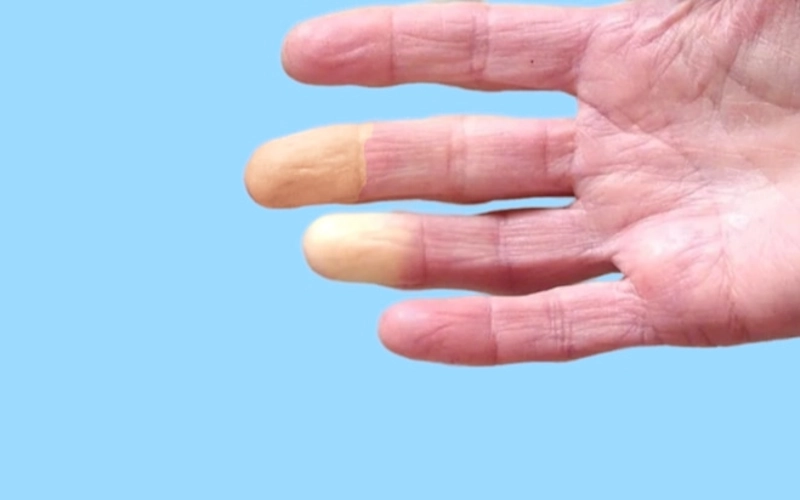What is Raynaud’s Phenomenon and how to detect it

Raynaud’s Phenomenon is a rare but debilitating vascular disorder that primarily affects the blood vessels in the fingers and toes. This condition can have a significant impact on the quality of life of those who suffer from it, but early detection is essential for effective management.
Today we want to explain what this disease is and give some tips for early detection.
What is Raynaud’s Phenomenon?
Raynaud’s Phenomenon, also known as Raynaud’s, is a condition that affects blood circulation in the small vessels of the fingers, and sometimes also in the ears, nose and lips. When a person experiences an episode of Raynaud’s, the blood vessels constrict excessively in response to cold or emotional stress, limiting blood flow to the affected areas. This can cause a change in skin color, ranging from white to blue and finally to red as blood re-circulates.
- Pallor: The fingers become pale and cold due to lack of blood flow.
- Cyanosis: The skin of the fingers turns blue or purple due to lack of oxygen in the blood.
- Redness: When blood circulation is restored, the fingers may become red and swollen.
- Tingling or numbness: Tingling or numbness may be experienced in the affected fingers.
- Talk to a specialist: A rheumatologist or vascular doctor can provide you with a more accurate diagnosis and can offer treatment options.
- Avoid triggers: Identify and avoid triggers that can set off Raynaud’s episodes, such as exposure to extreme cold or emotional stress.
- Healthy living: Maintain a healthy lifestyle with a balanced diet, regular exercise and stress management techniques to improve blood circulation and reduce the severity of episodes.
Thus, Raynaud’s phenomenon is a vascular condition that can significantly affect the quality of life of those who suffer from it. Early detection and proper management are essential to reduce symptoms and improve the quality of life of those who experience it. If you think you may have Raynaud’s, do not hesitate to seek medical attention for proper diagnosis and guidance.

